By: California State PTA Leadership Services and Family Engagement Commissions
You’re in the PTA to do good things for all kids and families. You might think your PTA is a place where everyone feels welcome, but others could see it differently because of popular media stereotypes, hearsay, or even personal experiences. These steps can improve your welcoming and inclusive environment and might even grow your PTA and attract some more great volunteers.
- Create a welcoming committee
Jennifer, a kindergarten mom, goes to a PTA meeting for the first time. No one greets her, and the officers do not acknowledge her. When the events chair gives a report, she uses acronyms and makes references to activities Jennifer has never heard of.
Why people might feel excluded: Jennifer was interested in the PTA, but at the meeting, she didn’t know who the members were or what they were talking about. Not only did she feel like an outsider; she also felt like she didn’t know how to contribute.
The way to fix it: Form a welcome committee or assign an officer to greet newcomers at each meeting. Wear name tags. Avoid using acronyms or jargon. Follow up with new attendees after the meeting to answer any questions they have about the PTA or learn whether they have any ideas about how they can help. Welcoming everyone is the first step in the PTA Family-School Partnership toolkit – find more info on this research based family engagement resource on the California State PTA website.
- Recruit everyone
Several seasoned PTA volunteers are setting up at the annual back-to-school night. As they unload decorations, they walk by the playground where a new parent at the school is playing with her kids. They invite her to the event but don’t introduce themselves or ask whether she’s interested in getting involved.
Why people might feel excluded: This new parent might have been looking for ways to get involved and meet new people. By walking by and only asking her to participate without telling her what they were doing, the PTA volunteers missed an opportunity to engage and invite a new volunteer into the group.
The way to fix it: It’s not always easy to know how your PTA is perceived. But consider every meeting with a new family an opportunity to talk about what your PTA does and to invite them to get involved. Remember to ask again later, too! If someone isn’t available the first time, they may be more receptive to a repeat request for help. Find recruitment ideas, tips, templates, and resources on the California State PTA website from the state Membership Services Commission!
- Be available
The PTA doesn’t communicate well with parents and there’s no list of officers on a bulletin board, website, or in a newsletter. Parents don’t know who runs the PTA or how to contact them.
Why people might feel excluded: Being unavailable makes the group feel exclusive as if members don’t want to share the information because they aren’t looking for new help. If it’s too hard to get “in,” some people will just stop trying. When you give up the chance to tell your own story, folks can make their own. Remember the adage that negative news travels twice as fast as positive.
The way to fix it: Find a volunteer who can keep your website updated regularly with every officer’s contact information. Link your PTA information to the school website, and supply the school administrators with the most updated list of officers, including email addresses and phone numbers, as parents will often call the school looking for information.
- Always follow up
The PTA asks parents to fill out a volunteer interest survey, but no one follows up with them. Parents who were willing to give their time assume that the PTA doesn’t need or want their help after all.
Why people might feel excluded: If someone offers to help and isn’t contacted, it feels like rejection. Rejection is key to the clique culture and breeds resentment and negativity. It can stunt further involvement by the potential volunteer (and their wider group of friends).
The way to fix it: Be diligent in following up after asking for input. Whether it’s on a fundraising survey or volunteer sign-up form, remember that parents took the time to respond to your request. You’ll be asking the same group for their help again in the future (maybe even next week!) and you’ll want their participation again. Try an online volunteer sign-up and management system; it makes following up much easier. It’s also okay to say sorry if you’ve dropped the ball but make a commitment to do better next time.
- Include New People in Decision Making and Leadership Roles
When the same people have been officers for years, newcomers feel like they’re not wanted or shouldn’t bother because they don’t have enough experience to take on a leadership role. When you do need to fill a volunteer position, you offer it to a friend.
Why people might feel excluded: The doors appear to be closed to new volunteers and their fresh ideas—which they might take to another organization if you don’t offer them an opportunity to get involved with your group. By not sharing information about volunteer openings, people who might want the job feel excluded.
The way to fix it: Set up a succession plan for the major roles on your PTA board. Use committees to allow volunteers to “ease into” learning about your PTA’s work and to provide places for them to engage between elections. A new leader might be interested in being an officer, so keep that in mind. Keep new volunteers informed by providing job descriptions including the time involved, so parents can choose what fits their schedules and interests best. Also, include a timeline of when new board and committee chairpeople are selected. You can find information on PTA elections, job descriptions and so much more in the “Run Your PTA” section of the California State PTA website from the Leadership Services Commission.
- Build diversity
You’ve held the same event for years, run by the same tight-knit group of people, and attendance has been dropping. A whole group of families have never participated because they don’t feel like the event includes them.
Why people might feel excluded: When different voices aren’t included in the planning and execution of an event, the ideas get stale and only appeal to a select few. For example, Doughnuts with Dads excludes any student whose father isn’t involved in the family or one who has two Moms.
The way to fix it: The way to fix it: Invite idea-sharing and feedback from people outside the usual circle of leaders and volunteers. Take notice of parents who don’t usually get involved; talk with them and personally invite them to share opinions and join committees. Make sure you have a wide representation on your board and in your committees including parents with kids in different grades, in different activities and caregivers who might not be parents or speak different languages. Don’t be satisfied with contacting just one member of a new group; no one wants to be a token, so invite three or four new people at minimum. Ask them to invite some friends. Avoid gender specific activities or language so that all families feel included. You can find information on how to build a more diverse, equitable & inclusive PTA on National PTA’s website.
Takeaways
Getting involved in your school’s PTA should be open to everyone and feel welcome and inclusive. It shouldn’t bring back memories of cliques, popular kids, or being left out. Here’s your to-do list when you are trying to break the perception (or reality) of a PTA that doesn’t feel welcoming to everyone:
- Remind officers to socialize outside of their “officer” circle at meetings and school events.
- Have a greeter at the door of your events to make newcomers feel welcome.
- Use name tags so that newcomers will know better who’s who.
- Always explain business items and acronyms even if they’re held over from previous meetings. Don’t presume everybody knows.
- Make people raise their hands and be recognized before they speak. Otherwise, meetings can devolve into chitchat, almost always among the “regulars.”
- Set up simple ways for everyone to get involved. Make it easy for volunteers to see what type of help is needed, along with specific time slots.
- Include current PTA leader contact information and planned events on the about page of your website and social media accounts. Consider the addition of brief job descriptions for officers and committee chairs.
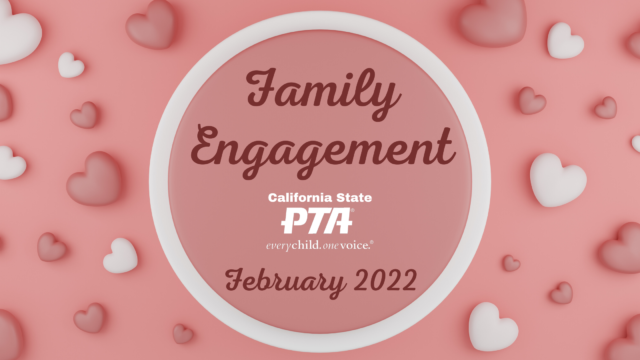
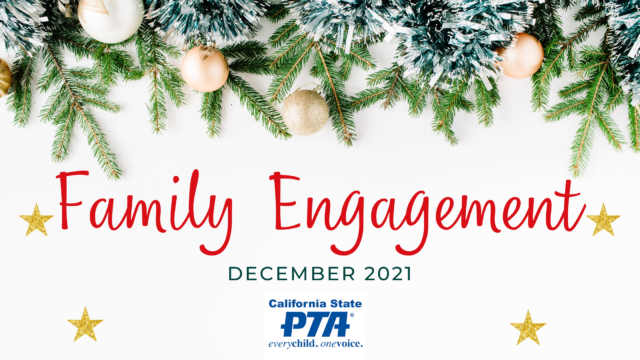
 We all want all families to feel welcome at our schools.
We all want all families to feel welcome at our schools.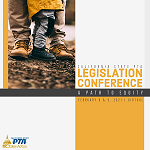 “A Path to Equity” was the focus of this year’s Legislation Conference, which I attended as a local PTA leader and advocate, but also as the parent of two public high school students. Bringing equity to California public schools has long challenged our educational leaders, and the pandemic has highlighted vast inequities in the system and left millions of California students more disadvantaged than ever. From access to mental health care and meals to the widening of a vast digital divide, the conference underscored that the prospect of getting students back on track is daunting. Far from being pessimistic, however, the conference presented information and opportunities that we as parents and PTA advocates can use to disrupt ineffective old practices and bring public education into a new era in which all are included and empowered, and in which the needs of all are seen and addressed.
“A Path to Equity” was the focus of this year’s Legislation Conference, which I attended as a local PTA leader and advocate, but also as the parent of two public high school students. Bringing equity to California public schools has long challenged our educational leaders, and the pandemic has highlighted vast inequities in the system and left millions of California students more disadvantaged than ever. From access to mental health care and meals to the widening of a vast digital divide, the conference underscored that the prospect of getting students back on track is daunting. Far from being pessimistic, however, the conference presented information and opportunities that we as parents and PTA advocates can use to disrupt ineffective old practices and bring public education into a new era in which all are included and empowered, and in which the needs of all are seen and addressed.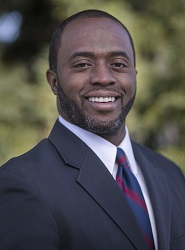 State Superintendent Tony Thurmond opened the conference and focused on restorative justice and increased digital access and literacy as examples of measures needed at the state level to increase inclusiveness and access for all students. President Celia Jaffe shared CAPTA’s ten recommendations for the timely and safe reopening of schools. Director of Legislation Shereen Walter shared CAPTA’s legislative agenda and the critical need for “our collective voices to influence legislation and the state budget to improve equity, access, and opportunity for all of California’s children.” Then, National PTA President-Elect Anna King shared her personal stories of witnessing how racial and economic inequities affected her own children, injustices which led directly to her involvement in PTA and her work to bring a collective voice on behalf of all children to our nation’s leaders and educational decision-makers. This was a powerful start to the conference.
State Superintendent Tony Thurmond opened the conference and focused on restorative justice and increased digital access and literacy as examples of measures needed at the state level to increase inclusiveness and access for all students. President Celia Jaffe shared CAPTA’s ten recommendations for the timely and safe reopening of schools. Director of Legislation Shereen Walter shared CAPTA’s legislative agenda and the critical need for “our collective voices to influence legislation and the state budget to improve equity, access, and opportunity for all of California’s children.” Then, National PTA President-Elect Anna King shared her personal stories of witnessing how racial and economic inequities affected her own children, injustices which led directly to her involvement in PTA and her work to bring a collective voice on behalf of all children to our nation’s leaders and educational decision-makers. This was a powerful start to the conference.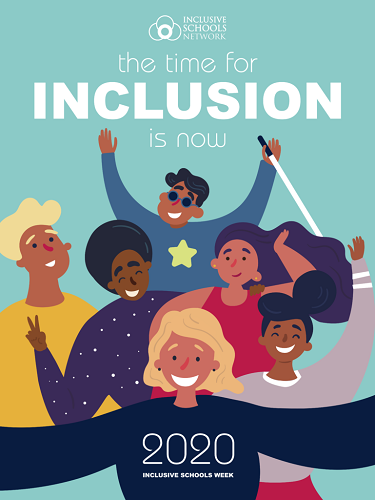 Twitter:
Twitter: